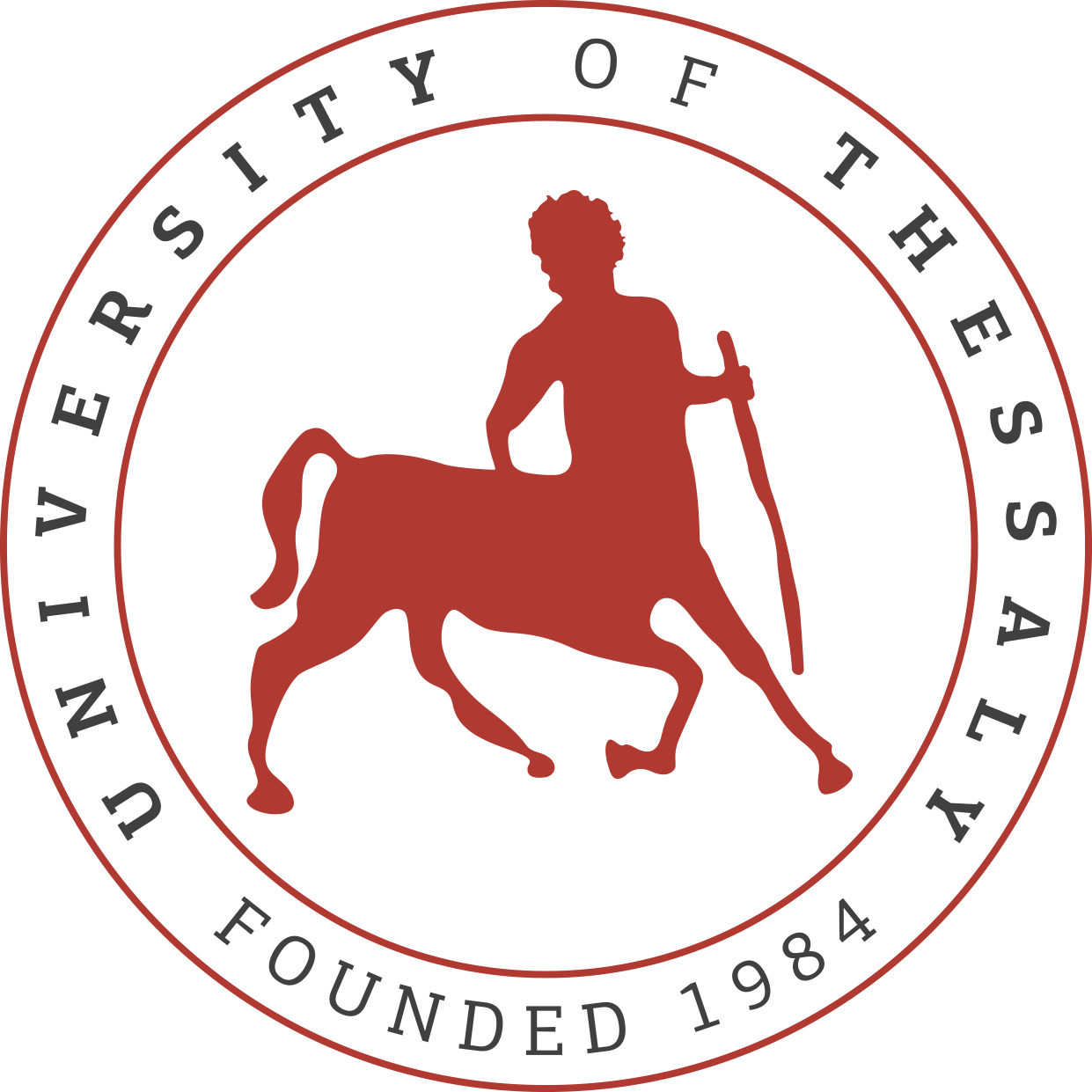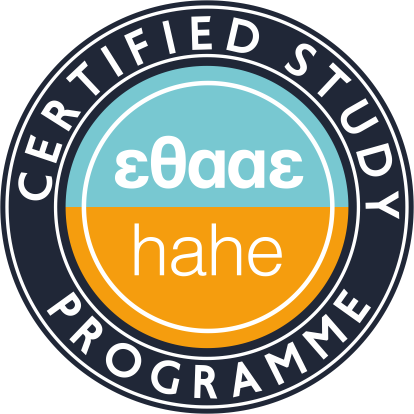3rd Semester – Creative Reading and Writing
ECTS Units: 12
Professor: Tsilimeni Tasoula, Sifaki Evgenia
1. COURSE CODE B6-X
STUDY SEMESTER C
SELF-ENDED TEACHING ACTIVITIES
in case the credits are awarded in separate parts of the course e.g. Lectures, Laboratory Exercises, etc. If the credits are awarded uniformly for the entire course, enter the weekly teaching hours and total credits
WEEKLY TEACHING HOURS 3
ECTS 12
Teaching activities include teaching the unit once a week
COURSE TYPE Compulsory, special background
PREREQUISITE COURSES: No
TEACHING and EXAMINATION LANGUAGE: Greek
THE COURSE IS OFFERED TO ERASMUS STUDENTS No
ELECTRONIC COURSE PAGE
(URL) https://eclass.uth.gr/modules/auth/courses.php
2. LEARNING OUTCOMES
Learning results
The learning outcomes of the course are described, the specific knowledge, skills and abilities of an appropriate level that the students will acquire after the successful completion of the course.
Consult Appendix A
Description of the Level of Learning Outcomes for each study cycle according to the Qualifications Framework of the European Higher Education Area
Descriptive Indicators for Levels 6, 7 & 8 of the European Qualifications Framework for Lifelong Learning and Annex B
Comprehensive Guide to Writing Learning Outcomes
Upon successful completion of the course, the student will:
a) has acquired the theoretical background in the reading skills of literature
b) has acquired the practical background in the writing skills of literature
c) has become familiar with techniques/strategies in the experiential teaching of literature
d) has enhanced his creativity
General Skills
Taking into account the general competences that the graduate must have acquired (as indicated in the Diploma Annex and listed below) in which / which of them is the course aimed at
- Adaptation to new situations
- Decision making
- Autonomous work
- Respect for diversity and multiculturalism
- Demonstrating social, professional and ethical responsibility Developing sensitivity to gender issues
- Exercise criticism and self-criticism
- Promotion of free, creative and inductive thinking
- Active hearing
- Sense of humor
- Problem solving
- Time management
3. COURSE CONTENT
The practical and laboratory side of Creative Writing involves a serious examination of the art and technique of writing, which includes the study and interpretation of a variety of literary texts, their structure and language, using literary theories such as semiotics, narratology, reading theories, feminist cultural criticism, etc. Literary texts representing different literary genres are studied, including genres of children’s literature.
The course focuses in particular on the creative reading and writing of the children’s book, from idea, conception, inspiration, to writing. Its goals are to develop in students the ability to value and evaluate literary texts, while at the same time offering them access to ideas, new approaches and techniques in the way of literary writing. In this way they will develop the skills that will allow them to experiment with writing themselves, but also, most importantly, they will be able to activate the creativity of their own students in turn.
Indicative thematic sections:
- Literature and children’s literature
- Elements of semiotics
- Elements of storytelling. Verbal narration and image narration
- Literary theory as cultural criticism
- Intertextuality
- The concept and construction of the literary hero/character. The gender of the literary character
- Theories of reading, aesthetic response and reception of literature.
- The postmodern children’s book
- Techniques for writing short stories and short form texts
- Teaching of literature and public Writing (detailed programs)
- Standard picture book publishing features. From manuscript to publisher
4. TEACHING AND LEARNING METHODS – ASSESSMENT
DELIVERY METHOD
face to face, Distance learning etc.
Face to face
USE OF INFORMATION AND COMMUNICATION TECHNOLOGIES
Use of T.P.E. in Teaching, in Laboratory Education, in Communication with students
Use of T.P.E. in Teaching, in Laboratory Education, in Communication with students
TEACHING ORGANIZATION
The way and methods of teaching are described in detail.
Lectures, Seminars, Laboratory Exercise, Field Exercise, Literature Study & Analysis, Tutorial, Internship (Placement), Clinical Exercise, Art Workshop, Interactive Teaching, Educational Visits, Study Preparation (Project), Writing Paper / Assignments, Artistic Creation, etc. etc.
Activity
Semester Workload
Choose
6 hours of study
Seminars for literature study & analysis
7 hours of study
Experiential creative reading and writing seminars
13 hours of study
Literature study at home in preparation for lectures and seminars
130 hours of study
Writing two homework assignments
140 hours of study
STUDENT EVALUATION
Description of the evaluation process
Assessment Language, Assessment Methods, Formative or Deductive, Multiple Choice Test, Short Answer Questions, Essay Development Questions, Problem Solving, Written Assignment, Report / Report, Oral Examination, Public Presentation, Laboratory Work, Clinical Patient Examination, Artistic Interpretation, Other / Others
Explicitly defined evaluation criteria are mentioned and if and where they are accessible by students.
Evaluation language is Greek.
The evaluation is conclusive and is based on two written assignments prepared by the students:
A theoretical (essay development that includes an analytical presentation of a literary theory and a critical analysis of a novel with a methodological tool the specific theory). (50% of grade)
A task of creative production of a literary text (short story). (50% of the grade).
5. RECOMMENDED-BIBLIOGRAPHY
Suggested Bibliography:
– Related scientific journals:
BIBLIOGRAPHY
Greek
Abrams, M.H. (2012). Dictionary of Literary terms. Theory, History, Literary Criticism. Translated Gianna Delivoria & Sofia Hatziioannidou. Pataki Publications.
Angeliki A. Giannikopoulou (2008). The modern illustrated children’s book, Kyriakos Papadopoulos Publications, Athens
Culler, J. (2013). Literary theory. A brief introduction. Translated Kaiti Diamantakou. Heraklion: University Publications of Crete.
Gérard G. (2018). Palimpsest. Second-rate literature. Translated Vassilis Patsogiannis. Ed. M. Stephanopoulou & L. Tsirimokou. Athens: MIET.
Holub, R.C. (2004). Recruitment Theory : A Critical Introduction. Translated by Constantine
Tsakopoulou. Athens: Metaichmio.
King, S. (2006). About writing. Athens: BELL.
Norton, D. E. (2006). Through the eyes of a child.
Introduction to children’s literature. Epicenter.
Stanzel, Fr. (1999). Narrative theory. Mtf. Chrysomalli-Henrich, K., Thessaloniki: University Studio Press.
Grosdos, S. (2014). Creativity and Creative Writing in Education: from the child secretary to the child creator of texts. Creative writing strategies. Thessaloniki: University of Macedonia Publications.
Kanatsouli, M. (2018). Introduction to the theory and criticism of children’s literature. Thessaloniki: University Studio Press. p. 43-56 and 71-108 and 159-190.
Karakitsios, A. (2016). About Children’s Literature. Thessaloniki: Zygos. Karakitsios, A. (2010). Contemporary short story. Thessaloniki: Libra. p. 96-117.
Karakitsios, A. (2013). Teaching literature and creative writing. Thessaloniki: Libra.
Kefalas, H. (2009). The lost poem. Athena! Legion
Kiosses, S. (2018). Introduction to creative prose reading and writing. Athens: Kritiki Publications. P.15-36 and 190-238 and 284-295.
Nodelman, P. (2009). Words for Pictures: The Narrative Art of the Children’s Picture Book. Mtf. P. Panau. Edited by Tassoula Tsilimeni. – 1st ed. – Athens: Pataki Publications. P. 165-288.
Nikolaidou, S. (2009). Literature and New Technologies. Cedar.
Economidou, S. (2016). The child behind the words: The intended reader of children’s books. Athens: Gutenberg. p. 15-47.
Papantonakis, G. & Kotopoulos, T. (2011). Setting Characters Plot. Reading a literary text. Athens: Ion Publishing Group.
Nea Estia Magazine, Tribute: The small and large form in literature. No. 1874, vol. 181. September2017, pp. 523-531 and 552-561.
Petrovich-Androutsopoulou, L. (2002). The wellness germ. Athens: Patakis.
Souliotis, M. (2012) Creative Writing. Sailing Instructions. Available from the Ministry of Education and
Culture of Cyprus. Pedagogical Institute of Cyprus. https://www.openbook.gr/dimiourgiki- grafi/
Tsilimeni, T. (2011). Storytelling and Education: An Introduction to the Art of Storytelling: Articles and Studies. Thessaloniki: Epicenter.
Tsilimeni, T. & Panau, P. (2011). The (intended) child reader of the translated children’s book. Apiliotis.
(http://www.apiliotis.gr/ArticlesList.aspx?C=367&A=379)
Tsilimeni, T. & Paparousi, M. (2010). The Art of Fiction and Creative Writing. Thessaloniki: Epicenter P. 89-124.
English
Brody Jes. (2018). Save the cat! Writes a novel. California, New York: Ten Speed Press.
Clementine Beauvais (2015). What’s in “the gap”? A glance down the central concept of picturebook theory. Barnelitterært Forskningstidsskrift, 6:1.
Graham A. (2011). Intertextuality. Routledge
Graham, J. (2000). Creativity and Children’s Books. Reading. Oxford: Blackwell.
Iser, Wolfgang (1978). The Act of Reading: A Theory of Aesthetic Response. Johns Hopkins U.P.
Kaufman, J. C. & Sternberg R. J. (Επιμ) (2010). The Cambridge Handbook of Creativity. Cambridge:
Cambridge University Press.
Nicolajeva, M. (2010). Literacy, competence and meaning-making: a human sciences approach. Cambridge Journal of Education, 40/2.
Rosenblatt, L. (1978/1994). The Reader, The Text, The Poem. Southern Illinois University.
Seelinger Trites, R. (1994). Manifold Narratives: Metafiction and Ideology in Picture Books. Children’s Literature in Education, 25/4.


